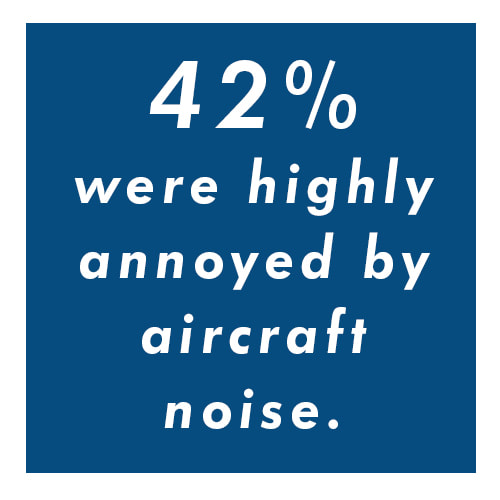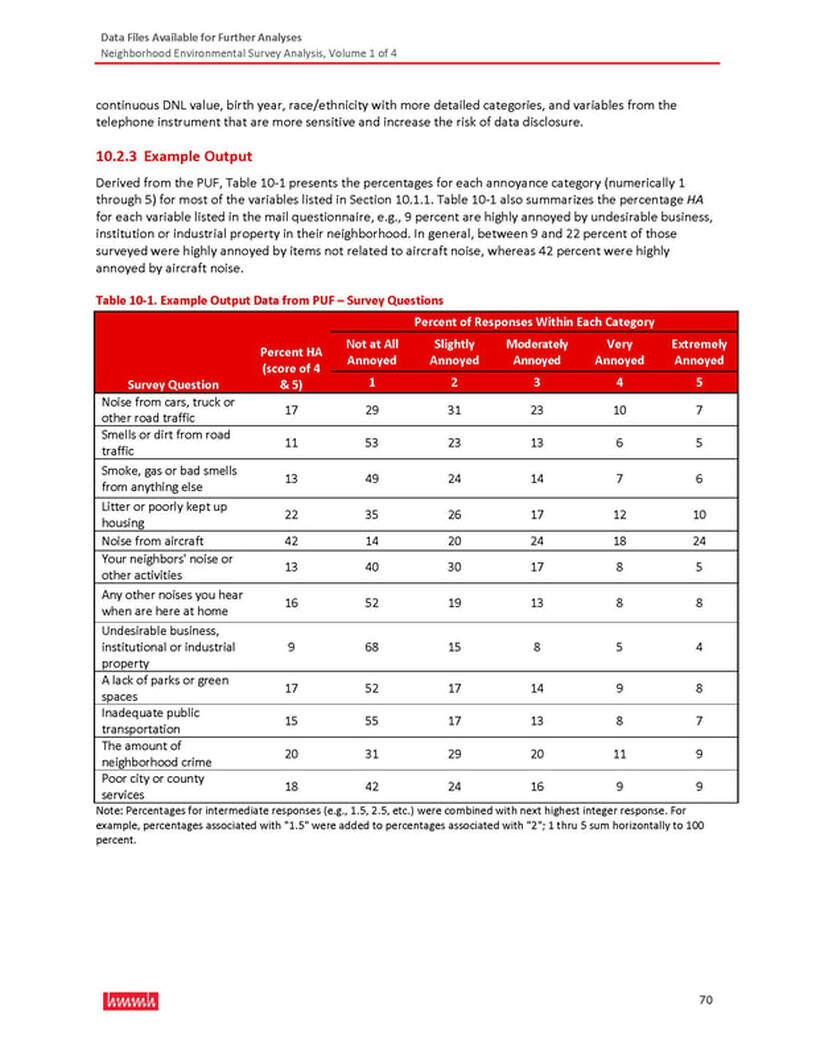Noise Pollution
Noise pollution is a very real health issue to our communities. Not just the humans in them, but the other animals and wildlife that call these places home.
|
Per the Colorado Department of Transportation:
Noise is considered unwanted sound that can disturb routine activities (e.g., sleep, conversation, student learning) and can cause annoyance. |
Aviation Noise
|
The Colorado Department of Transportation has published guidelines on noise and compatible land use planning. These guidelines state that "Aviation noise primarily results from the operation of fixed and rotary wing aircraft, such as departures, arrivals, overflights, taxiing, and engine run-ups. Noise is often the predominant aviation environmental concern of the public. Aircraft noise in communities around airports historically generated most of the noise issues. There are increasing concerns in suburban and rural areas farther from airports where ambient noise is lower than it is in the more urbanized areas that tend to surround many commercial service airports...The compatibility of existing and planned land uses with proposed aviation actions is usually determined in relation to the level of aircraft noise. "
|
Recently, a federal judge in Colorado issued a finding that using noise modeling was not a sufficient substitute for noise monitoring, and that the noise modeling greatly underestimated the actual noise impact on communities surrounding the airport. As proof, the Department of Transportation publishes a national transportation noise map, in which you can see the noise impacts associated with highways, train lines, and airports. As you can see, aviation has a significant impact on the noise pollution for areas surrounding airport operations (and not just in the immediate half-mile vicinity).
|
FAA Noise Research Program Neighborhood Environmental Survey On Aircraft Noise
|
Executive Summary"The Federal Aviation Administration (FAA) has undertaken a multi-year research effort to quantify the impacts of aircraft noise exposure on communities around commercial service airports in the United States (US). Community annoyance is the impact of interest covered by this report. Researchers typically determine an individual’s annoyance to noise through sociological surveys that measure subjective reactions to cumulative noise exposure."
"Research published in the two decades since the release of the FICON report suggests the FICON curve might under-estimate annoyance due to aircraft noise exposure. More recent dose-response curves from data collected outside the US have shown increased levels of annoyance at a given noise exposure level; further, the FICON curve included multiple modes of transportation, not just aircraft." |
“The result of this effort is an update to the scientific evidence on the relationship between aircraft noise exposure and the annoyance of individuals living in airport communities.”
“Noise is not always just about decibels; the pitch, vibration, variation in intensity and the length of exposure time can have impacts too.” |
“The level of annoyance also varies owing to factors such as the length of time a person lives in an area affected by aircraft noise, personal sensitivity, the impact of outside influences and the activity the individual is engaged in at the time e.g. sleeping, working, watching TV.” |
It's Not Just Aircraft - Drones are Coming Soon
|
There has been talk at Rocky Mountain Metropolitan Airport, among others, about bringing a drone port to the airport to support drone operations for package deliveries and the like. This would mean a substantial impact to the noise levels in the communities surrounded by and delivered to from the airport.
By amending 14 C.F.R. Part 107 to allow previously prohibited operation over unrelated populations and moving vehicles, both during the day and at night, FAA may have opened the flood gates to UA without adequate consideration of their impacts on underlying populations. |
Incessant mechanical buzzing doesn’t fit with anyone’s idea of a pleasant community. That’s what drones will bring, though. Even domestic drones can raise baseline sound pressure levels by at least 20 decibels; when each 6dB increase means loudness doubles, that means a single drone can make an area 8 to 12 times louder than it is now. |
The Economic Costs of Noise Pollution
|
There is another economic issue, and that is of the price that the community pays for airports. In the case of Rocky Mountain Metro Airport, this cost alone exceeds the rosy $700M annual “economic impact” that CDOT claims this facility brings to the region. That is the additional cost of health care paid by the community because of the microparticulate poisons of lead and other pollutants, adding to the ozone crisis, and, most negative of all, the damage to human health brought by noise. There is a wealth of data on this topic assembled over many decades.
Noticed or not, noise is much more than an annoyance. Research clearly shows that our nervous systems cannot simply “tune out” the noise. That means that the harm to our health takes place while we sleep or are distracted by other activities. Health care costs associated with this harm are equal to or greater than the costs for lead exposure to children. In the instance of Rocky Mountain Metro Airport, the research and accompanying information has been used to determine the annual cost of health care to communities impacted by aviation noise and lead on a per person basis. These numbers are very conservative (because much |
of this data used health care costs that are more than a decade old and none of it includes the compounding effects of the microfine air pollutants caused by aviation traffic). An estimate of these costs is as follows:
Maps for the flight paths for flights originating from or landing at RMMA clearly indicate that it affects at least 500,000 people. That means that the health care cost of this airport is $736M, far in excess of its supposed economic impact. And this is only part of the cost equation for us. It does not consider the victimization of new residents as new homes are built in these areas or as existing homes are sold (by owners seeking to escape the noise) and others move in. More importantly, it does not include the loss of property value, nor the subsidy costs of FAA grants. Please see the spreadsheet below for a more detailed breakdown. |



